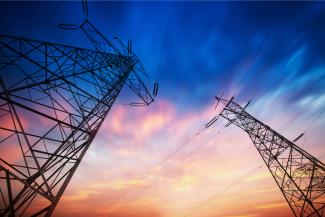Electric faults cause hundreds of workplace accidents every year. But the risks go beyond electric shock. Fires caused by an electrical spark can spread far and fast. And if a community loses power and communications, they are cut off and unable to get help.
The risks with high voltage are increasing as the amount of current used is becoming more powerful. Materials and equipment keep updating. Our climate is changing. And the measure of safety has moved beyond the physical. The Australian Standards must continuously update, and we must keep up.
Updates to AS2067
AS2067 provides ‘minimum requirements for the design and erection of high voltage installation in systems with nominal voltages about 1kV a.c. and nominal frequency up to and including 60Hz’. This standard was updated to meet the changing environment engineers work in.
John Giles is an electrical engineer with more than 40 years’ HV experience and has taught HV engineering for 20 years. He’s also a contributor to AS2067, which he says has had continuous refinement to keep up with modern technology.
‘Design is now based on probability,’ Giles says. ‘You have to look at what could go wrong according to the environment you’re in.’
Effects of a changing environment
As our climate changes, the environmental risks increase. Wildfire’s unpredictable weather system causes damaging winds, so electrical infrastructure must be built to cope with the firestorm. The recent bushfires are a stark reminder of these risks.
‘A reason the fires were really drawn out was because the transmission lines became burnt out,’ Giles says.
‘Adding to the problem, the fires destroyed communications infrastructure.
‘HV design must consider all the environmental conditions—not just the immediate conditions—but others that can affect human safety, like the ability to call for help.’
The standard keeps updating to consider these further risks to human life. When heavy monsoonal rainfall in Townsville in 2019 met with rising rivers, the town flash flooded.
This put the Hermit Park Substation underwater. The network had to be quickly de-energised to allow water rescues to happen safely around powerlines.
Australian Standards are taking into account these increasingly extreme and unpredictable weather events.
Range of danger
Electricity can jump in a three-metre arc, so we need to think not just about protecting a structure, but everything nearby. When equipment is full of oil, there’s a chance it can catch fire from an electrical fault happening three metres away.
‘For that reason, there are new rules in the standard about how far a green transformer box can be from a house, mitigating the risk that the house would burn down too,’ Giles explains.
‘We’re making sure the effects of electricity don’t harm other people.’
Upskilling the engineering workforce
Working out how to do this work safely is not easy—there’s no one-size-fits-all approach to follow.
But understanding the standard and concepts gives you the foundation for good planning. Although electrical systems cover the entire country and every industry relies on electricity, Giles says it’s a problematic area for skills.
‘We need to be upskilling a modern generation of engineers. Everything in modern society relies on power. If you’re an engineer in railway signalling, those signals need an HV power supply. Or if you’re using EMF and someone wants to run a big power cable, working out how to do that is not easy.’
Join the course
Giles has a passion for teaching the next generation of engineers from every industry about safe HV design. His interactive virtual workshop will give you a thorough overview of AS2067, including the core concepts of HV engineering: clearances, earthing, fire risk mitigation and equipment requirements.
It’s a course covering important safety issues for engineers in any industry, but particularly if you work with electrical utilities, transmission and distribution, large power, generators and renewable energy. Find out more.
